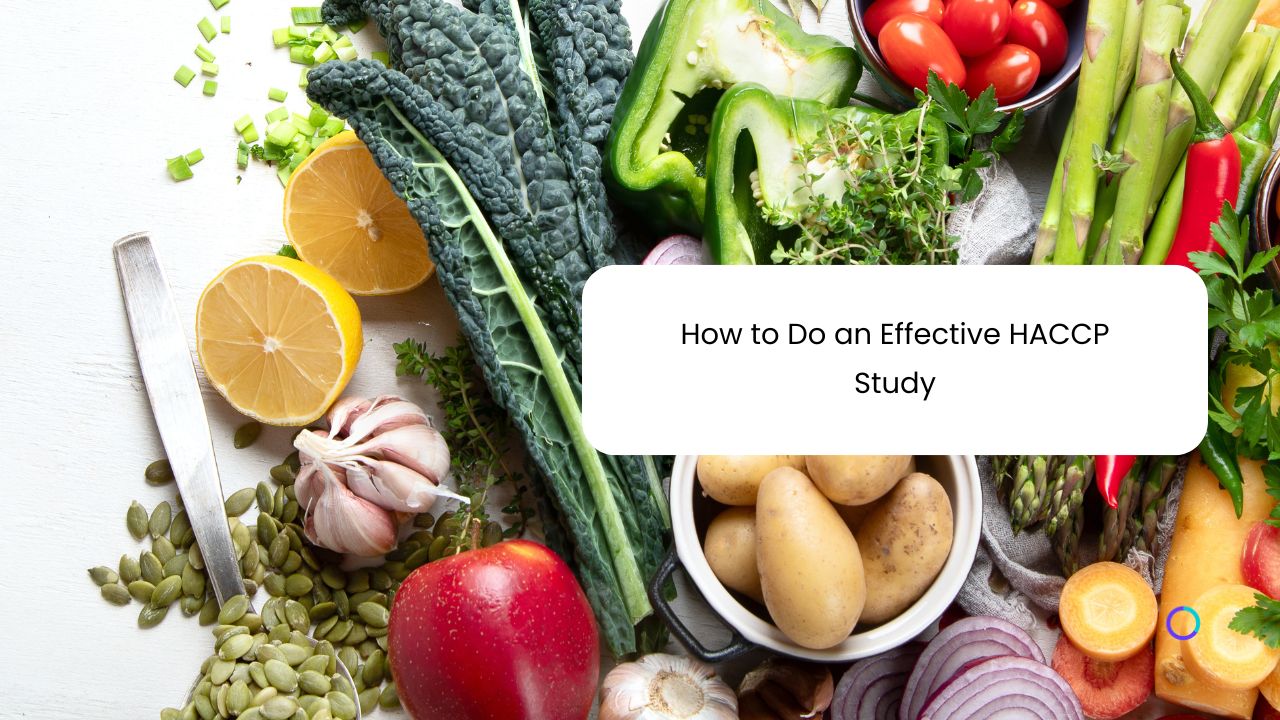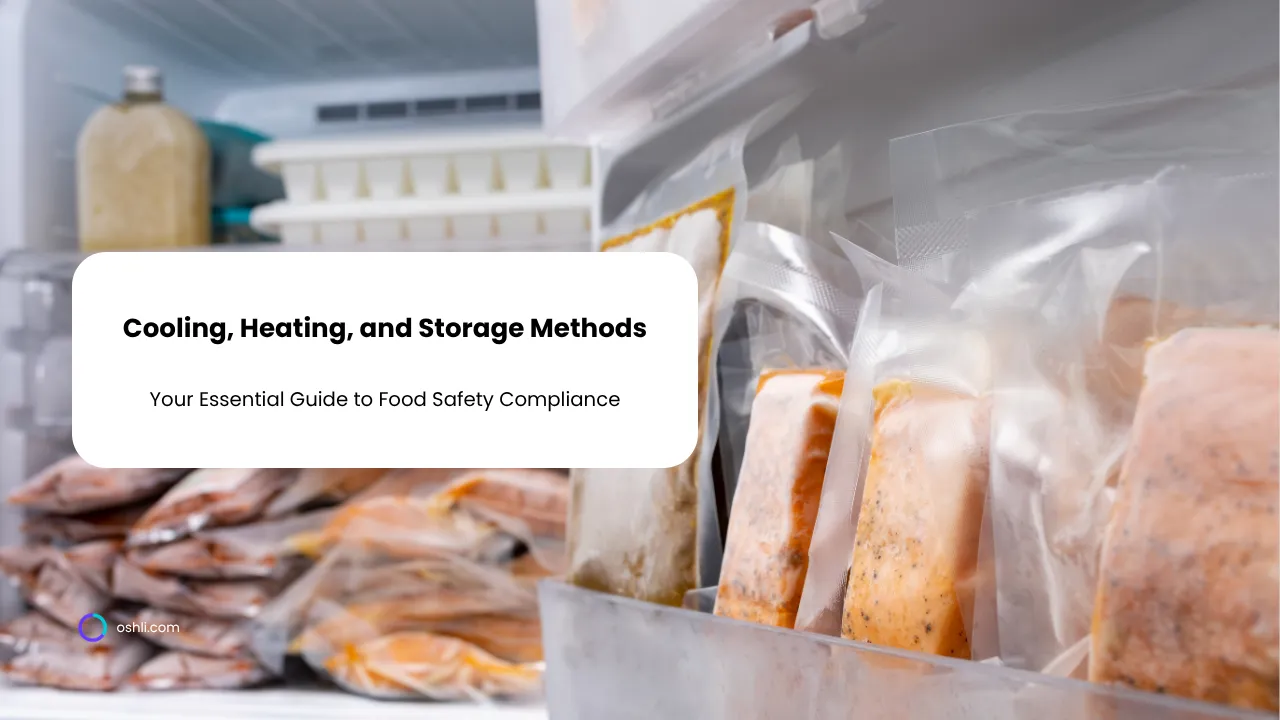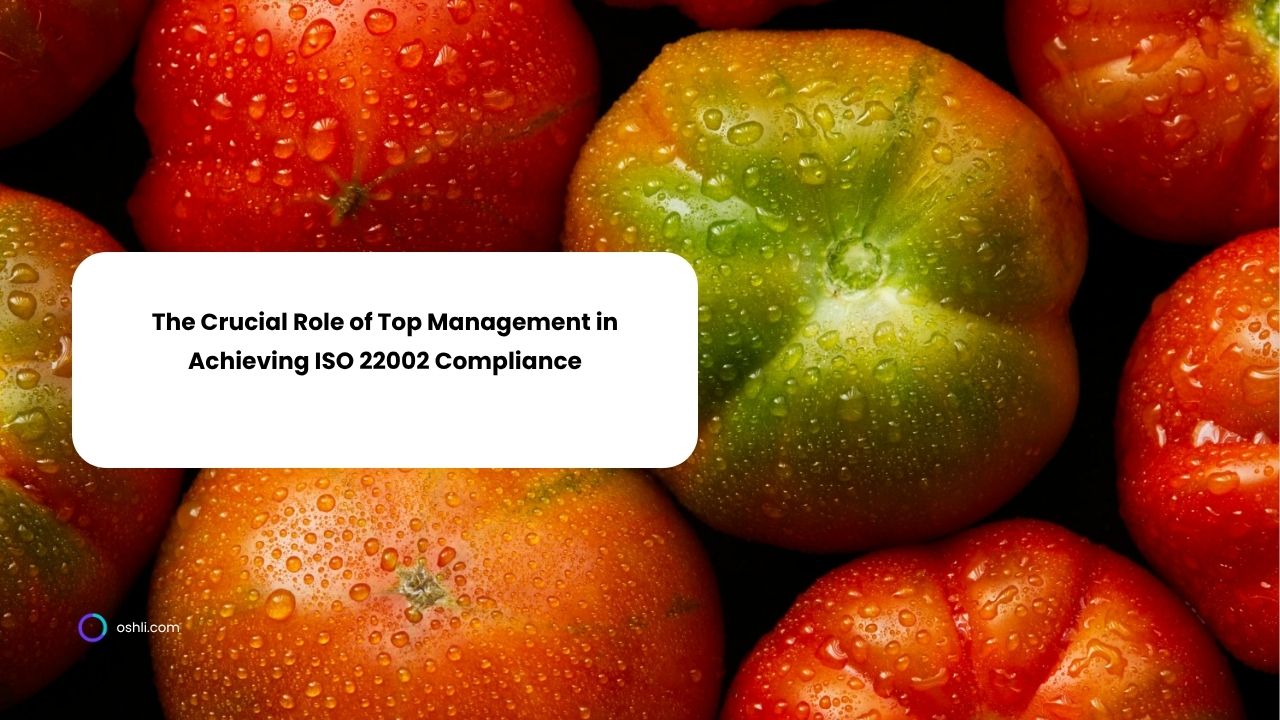
How to Do an Effective HACCP Study
Table of Contents
- Introduction
- What the HACCP Plan Is
- Developing a HACCP Plan
- The Process Flow Diagram Defined
- The Process Flow Diagram
- Constructing a Process Flow Diagram
- The Structured Approach to Hazard Analysis
- The Severity and Hazard Significance
- Conclusion
Introduction
In the ever-evolving world of food safety, the Hazard Analysis and Critical Control Points (HACCP) system has emerged as a globally recognized and scientifically driven methodology to protect consumers from foodborne illnesses. First developed for space missions in the 1960s, HACCP has become the cornerstone of modern food safety management—mandated or recommended by regulatory bodies worldwide.
Yet, knowing that HACCP is critical for your organization’s success is only half the battle. To reap its full benefits, you must understand how to conduct a thorough HACCP study. This involves mapping out your processes, identifying hazards, assessing their severity and significance, and implementing robust controls. Central to any successful HACCP study are well-defined Process Flow Diagrams (PFDs) and a structured approach to hazard analysis.
In this comprehensive article, we will walk through the essential steps of conducting a HACCP study. We will explore what a HACCP plan is, how to develop one, why the process flow diagram is so crucial, and how to structure your hazard analysis to focus on severity and significance. By the end, you will have a detailed roadmap to guide your organization toward effective food safety and regulatory compliance.
What the HACCP Plan Is
1. Definition of a HACCP Plan
A HACCP plan is a written document that outlines how an organization will implement the HACCP principles to ensure food safety at every stage of production or handling. It serves as the blueprint for identifying biological, chemical, and physical hazards, determining the Critical Control Points (CCPs), and setting up measures to prevent or reduce these hazards to acceptable levels.
In short, the HACCP plan:
- Documents the step-by-step approach to managing potential risks.
- Defines the scope of your operations, from raw material reception to final product distribution.
- Specifies corrective actions to take when critical limits are not met.
- Ensures traceability and provides a foundation for continuous improvement.
2. Why the HACCP Plan Matters
The HACCP plan is not just a regulatory checkbox. When properly developed and implemented, it helps organizations:
- Protect Consumer Health: By focusing on prevention, HACCP minimizes the risk of contaminated products reaching consumers.
- Enhance Brand Reputation: A robust food safety system instills confidence among customers, partners, and stakeholders.
- Comply with Legal Requirements: Many countries and regions (e.g., the EU, the U.S., Canada) have specific regulations mandating HACCP or equivalent systems.
- Optimize Processes: The analytical nature of HACCP can reveal inefficiencies, leading to better resource utilization and reduced waste.
3. Key Components of a HACCP Plan
A typical HACCP plan includes:
- Product Description: Defines the nature, composition, packaging, shelf life, and intended use of the product.
- Flow Diagrams: Visually represent each step in the process.
- Hazard Analysis: Identifies potential hazards and their preventive measures.
- Critical Control Points: Pinpoints where control is essential to ensure safety.
- Critical Limits: Establishes maximum or minimum values that ensure a CCP effectively controls the hazard.
- Monitoring Procedures: Outlines how and when data is collected to confirm critical limits are met.
- Corrective Actions: Describes actions to be taken when monitoring shows a deviation from critical limits.
- Verification Procedures: Specifies methods to confirm that the system is working as intended.
- Record-Keeping and Documentation: Maintains a robust paper trail or digital logs to show compliance and facilitate traceability.
Developing a HACCP Plan
1. Preliminary Steps
Before diving into the formal hazard analysis, the Codex Alimentarius recommends five preliminary steps:
Assemble the HACCP Team
Gather a cross-functional group with expertise in quality, operations, engineering, microbiology, and other relevant fields.
Describe the Product
Define the product’s composition, shelf life, storage conditions, packaging, and intended use.
Identify the Intended Use
Clarify if the product is for the general population or vulnerable groups (e.g., immunocompromised individuals, infants, elderly).
Construct a Process Flow Diagram
Map out the entire process from start to finish, including rework and return loops.
On-Site Confirmation of the Flow Diagram
Walk through the actual process to confirm the accuracy of the flow diagram.
2. Establishing the Seven HACCP Principles
After the preliminary steps, the seven core principles of HACCP guide the plan’s development:
-
Conduct a Hazard Analysis
Identify potential hazards and determine preventive measures. -
Determine Critical Control Points (CCPs)
Pinpoint steps where control is essential to prevent or eliminate a hazard. -
Establish Critical Limits
Set measurable thresholds (e.g., temperature, time, pH). -
Establish Monitoring Procedures
Define how you will track compliance with critical limits. -
Establish Corrective Actions
Outline steps to take when a deviation occurs. -
Establish Verification Procedures
Confirm that the HACCP system is functioning as planned. -
Establish Documentation and Record-Keeping
Keep records to demonstrate ongoing compliance and facilitate traceability.
3. Common Pitfalls in HACCP Plan Development
- Underestimating the Scope: Failing to include all relevant processes, ingredients, or distribution channels can leave gaps in hazard control.
- Overcomplicating the Plan: A HACCP plan should be as simple and practical as possible, focusing on critical risks.
- Inadequate Training: Even the best plan will fail if staff are not trained to execute it properly.
- Poor Documentation: Without clear, consistent records, it’s difficult to prove that the plan is being followed.
The Process Flow Diagram Defined
1. What Is a Process Flow Diagram?
A Process Flow Diagram (PFD) is a visual representation of every step in a food production or handling process. It typically includes the following elements:
- Start and End Points: Where the process begins (e.g., receiving raw materials) and ends (e.g., final product dispatch).
- Process Steps: Each significant action, such as mixing, cooking, cooling, packaging, and labeling.
- Decision Points: Places where products may be diverted or reworked.
- Inputs and Outputs: Raw materials, ingredients, and by-products.
- Storage and Transfer Points: Locations where the product is stored or moved between steps.
2. Why a Process Flow Diagram Matters
The PFD is the foundation of a HACCP study because it:
- Provides Clarity: Offers a straightforward way to visualize complex operations.
- Facilitates Hazard Identification: Each step in the diagram can be analyzed for potential hazards.
- Supports Training: New employees or auditors can quickly understand the workflow.
- Aids in Communication: Different departments can align on process steps and identify responsibilities.
3. Levels of Detail
When creating a PFD, it’s crucial to strike the right balance between detail and clarity:
- High-Level Diagrams: Offer a broad overview without delving into micro-level details (e.g., exact temperatures or equipment specs).
- Detailed Diagrams: Include all sub-steps, decision points, rework loops, and potential hold points.
The level of detail you choose often depends on the complexity of the product and the risk profile of the hazards involved.
The Process Flow Diagram
1. Mapping the Process Steps
A typical Process Flow Diagram for a food manufacturing or handling facility might include the following generic steps:
- Receiving of Raw Materials
- Storage
- Preparation (e.g., washing, cutting)
- Processing (e.g., cooking, mixing)
- Cooling (if applicable)
- Packaging
- Labeling
- Storage of Finished Products
- Distribution
Depending on the nature of the product, there could be additional steps like fermentation, dehydration, or specialized packaging (e.g., vacuum packing, modified atmosphere).
2. Identifying Inputs and Outputs
For each step, note all inputs and outputs:
- Inputs: Raw materials, water, processing aids, packaging materials, etc.
- Outputs: Semi-finished products, by-products, waste, and final products.
This helps you assess hazard sources more accurately.
3. Recognizing Rework and Return Loops
Rework can introduce significant hazards if not managed properly. Similarly, return loops for cleaning or maintenance can affect product safety. Clearly marking these loops ensures they’re included in the hazard analysis.
4. Verifying the Diagram
Verification is crucial. A cross-functional team walk-through of the production line can confirm that the diagram accurately reflects real conditions. Any discrepancies should be updated. A well-verified PFD is vital for accurate hazard analysis.
Constructing a Process Flow Diagram
1. Practical Steps to Construct Your Diagram
- List All Major Process Steps: Start with a basic outline.
- Subdivide Complex Steps: Break down steps like “cooking” if they have multiple phases (e.g., preheating, holding, cooling).
- Include Decision Points: Note points where products might be diverted or reworked.
- Add Inputs and Outputs: Clearly indicate what enters and leaves each step.
- Use Standardized Symbols: Although optional, standard symbols can improve clarity.
2. Digital vs. Hand-Drawn
- Digital Tools: Software like Microsoft Visio or Lucidchart can make editing and sharing diagrams easier.
- Hand-Drawn Diagrams: Suitable for initial brainstorming or smaller operations; can be digitized later.
3. Common Challenges
- Overcrowded Diagrams: Too much detail can render a diagram unreadable.
- Incomplete Steps: Missing minor steps (like micro-holds, sampling, or cleaning in place) can lead to overlooked hazards.
- Frequent Changes: Processes often evolve, so you’ll need to update diagrams regularly.
4. Tips for Success
- Collaborate Widely: Involve operators, quality personnel, and maintenance staff for real-world insights.
- Review Regularly: Revisit your diagrams whenever process changes occur or at scheduled intervals.
- Keep It Simple: Clarity should be the priority. Complex operations might need multiple sub-diagrams.
The Structured Approach to Hazard Analysis
1. Defining Hazard Analysis
Hazard Analysis is the cornerstone of any HACCP study. It involves identifying possible hazards (biological, chemical, and physical) and assessing their likelihood and severity.
2. Types of Hazards
- Biological: Bacteria (e.g., Salmonella, E. coli), viruses, parasites, fungi.
- Chemical: Pesticide residues, cleaning agents, heavy metals, allergens.
- Physical: Glass shards, metal fragments, plastic pieces.
3. The Two-Stage Approach
- Hazard Identification: Brainstorm hazards at each PFD step, using sources like scientific literature and historical data.
- Hazard Evaluation: Evaluate likelihood and severity to determine hazard significance.
4. Tools for Hazard Analysis
- Risk Matrices: Plot severity vs. likelihood to prioritize hazards.
- Decision Trees: Codex-based decision trees help classify hazards as CCPs or otherwise.
- Checklists: Standardized forms ensure uniform hazard identification across different products.
The Severity and Hazard Significance
1. Understanding Severity
Severity indicates how severe the harm can be if the hazard is not controlled:
- Mild: Minor illness or discomfort.
- Moderate: Illness requiring medical intervention.
- High: Life-threatening or resulting in chronic conditions.
2. Determining Likelihood
Likelihood looks at how often the hazard may occur:
- Historical Data: Past contamination events or recalls.
- Supplier Reliability: Quality assurance at the sourcing level.
- Process Controls: Effectiveness of existing preventive measures.
- Environmental Factors: Facility hygiene, climate, water quality.
3. Combining Severity and Likelihood
Hazards with high severity and high likelihood are typically the most significant. However:
- High Severity / Low Likelihood: Can still be significant if consequences are extremely dangerous (e.g., botulism).
- Moderate Severity / High Likelihood: Also critical if it affects many consumers (e.g., recurrent metal fragments).
4. Prioritizing Significant Hazards
Significant hazards require robust controls:
- Critical Control Points (CCPs): When a hazard can be completely prevented or reduced to an acceptable level.
- Operational Prerequisite Programs (OPRPs): Important but not necessarily CCPs (e.g., metal detection in some contexts).
- Prerequisite Programs (PRPs): General controls like sanitation, pest control, and equipment maintenance.
5. Continuous Monitoring and Review
Hazard significance can evolve due to new data, changes in suppliers, or shifts in regulatory standards. Periodically revisiting severity and likelihood ensures your HACCP plan stays effective.
Conclusion
Conducting a HACCP study is a rigorous but rewarding process that underpins the entire food safety management system. It begins with understanding what a HACCP plan is and how to develop one in alignment with the seven principles laid out by Codex Alimentarius. Central to this effort is the Process Flow Diagram, which visually details each step in the operation, providing the framework for a structured hazard analysis.
From receiving raw materials to final product distribution, every process step must be scrutinized for biological, chemical, and physical hazards. By assessing each hazard’s severity and likelihood, you can prioritize those that pose the greatest risk to consumer health and safety. Once identified, these hazards can be controlled through Critical Control Points (CCPs), Operational Prerequisite Programs (OPRPs), and Prerequisite Programs (PRPs).
The ultimate goal of a HACCP study is to create a living document—a HACCP plan that evolves alongside your processes, scientific understanding, and consumer expectations. Regular verification, validation, and review will ensure that your plan remains robust and effective, safeguarding your brand, your customers, and the broader community.
Key Takeaways:
- A HACCP Plan is the written strategy outlining how to manage food safety hazards.
- Developing a HACCP Plan requires careful planning, team collaboration, and adherence to the seven HACCP principles.
- The Process Flow Diagram is crucial for visualizing each step, identifying hazards, and structuring your analysis.
- Constructing a Process Flow Diagram involves detailing inputs, outputs, decision points, and rework loops.
- A Structured Approach to Hazard Analysis ensures you systematically identify and evaluate risks.
- The Severity and Hazard Significance framework helps prioritize which hazards require the most stringent controls.
By integrating these elements into your HACCP study, you set the stage for a resilient, proactive, and science-based food safety system.
Join our newsletter!
Enter your email to receive our latest news.
Don't worry, we don't spam
Related Articles

Guide to Developing a Professional Checklist for ISO 45001 Diagnostic Audits
The ISO 45001 standard establishes a framework for Occupational Health and Safety Management Systems (OHSMS), aiming to enhance employee safety, reduce workplace risks, and create safer working conditions. A diagnostic audit aligned with ISO 45001 is a proactive approach that allows organizations to assess current compliance, identify weaknesses, and prioritize improvements. Central to this process is a professionally structured checklist that ensures consistency, accuracy, and depth in audit execution.

Cooling, Heating, and Storage Methods: Your Essential Guide
Discover how to create a cooling, heating, and storage methods template to ensure food safety, meet compliance, and optimize temperature control with free templates.

The Crucial Role of Top Management in Achieving ISO 22002 Compliance
Explore how top management's leadership drives ISO 22002 compliance, ensuring robust food safety management through commitment, policy, and oversight.


